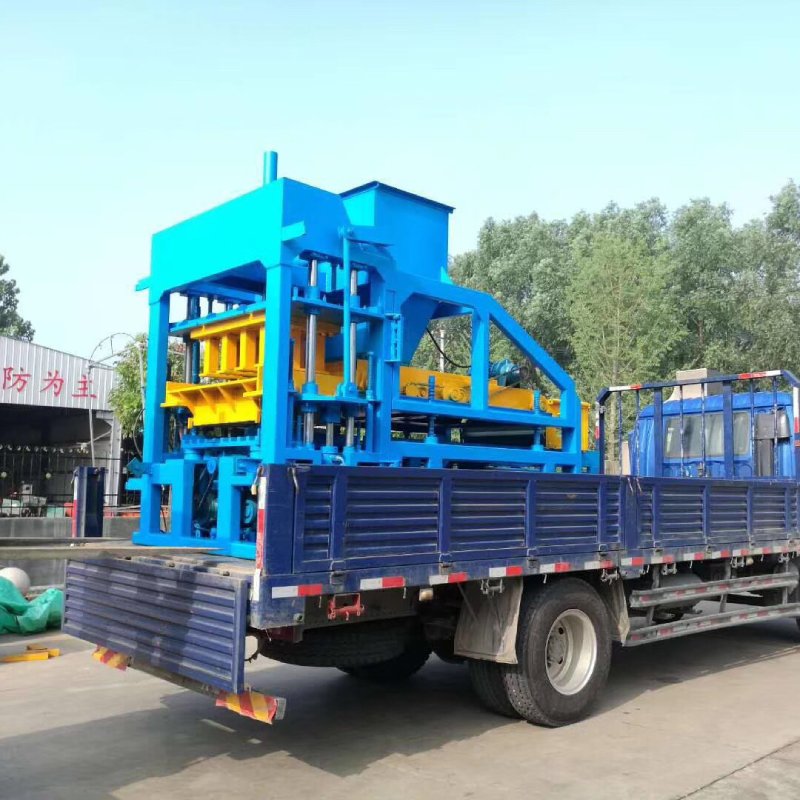
Image source:Aiwei block machine
Introduction
Brick making has a rich history dating back thousands of years, but in the modern era, it’s undergoing a technological revolution. Artificial Intelligence (AI) and the Internet of Things (IoT) are being integrated into automatic brick making machines, transforming the industry in unprecedented ways. This article explores the convergence of AI and IoT in brick production, its potential impact, and the exciting future it promises.
1. Introduction: The Age of Smart Manufacturing
Introduce the concept of smart manufacturing and the pivotal role of AI and IoT in revolutionizing various industries. Emphasize the importance of sustainability, efficiency, and quality in brick making.
2. Understanding AI and IoT in Brick Making Machines
2.1. Artificial Intelligence (AI)
- Explain AI and its subsets like machine learning and neural networks.
- Discuss how AI can be applied in brick manufacturing, including process optimization, quality control, and predictive maintenance.
2.2. Internet of Things (IoT)
- Define IoT and its relevance in the context of brick making machines.
- Describe how IoT sensors and devices can collect and transmit data for real-time monitoring and control.
3. Benefits of AI and IoT Integration
3.1. Enhanced Efficiency
- Explore how AI algorithms can optimize production processes, reducing energy consumption and material waste.
- Discuss how IoT sensors provide real-time data for efficient resource management.
3.2. Quality Assurance
- Explain how AI-powered image recognition and data analysis can detect defects and ensure consistent brick quality.
- Highlight how IoT sensors monitor environmental conditions to maintain ideal curing conditions.
3.3. Predictive Maintenance
- Detail how AI can predict equipment failures and schedule maintenance, minimizing downtime and repair costs.
- Discuss the role of IoT in collecting equipment performance data for predictive maintenance.
4. Case Studies: AI and IoT Success Stories in Brick Making
Provide real-world examples of brick manufacturers or facilities that have adopted AI and IoT technologies. Highlight the specific benefits they have achieved, such as increased production efficiency, reduced waste, or improved product quality.
5. Challenges and Considerations
5.1. Implementation Costs
- Discuss the initial investment required for AI and IoT integration.
- Explain how long-term cost savings can outweigh the upfront expenses.
5.2. Workforce Training
- Address the need for skilled technicians and operators to manage AI and IoT systems.
- Discuss training and upskilling initiatives.
5.3. Data Security
- Explain the importance of data security in IoT-enabled brick making machines.
- Discuss strategies for safeguarding sensitive information.
6. The Future Outlook
6.1. Sustainable Brick Manufacturing
- Explore how AI and IoT can contribute to sustainable practices, such as carbon-neutral production and resource conservation.
6.2. Customization and Design Flexibility
- Discuss how AI can facilitate customized brick designs and shapes.
- Explain the potential for IoT-enabled machines to adapt to changing design requirements.
6.3. Integration with Smart Construction
- Envision a future where AI-equipped bricks communicate with smart buildings, enabling data exchange and responsive construction.
7. Conclusion: Building a Smarter Tomorrow
Summarize the key takeaways from the article, emphasizing the transformative potential of AI and IoT in automatic brick making machines. Highlight how these technologies are poised to reshape the brick manufacturing landscape by improving efficiency, quality, and sustainability.
End the article by underscoring the importance of embracing innovation to meet the growing demands of the construction industry while minimizing its environmental footprint. AI and IoT integration in brick production represent a giant leap toward a smarter and more sustainable future.
